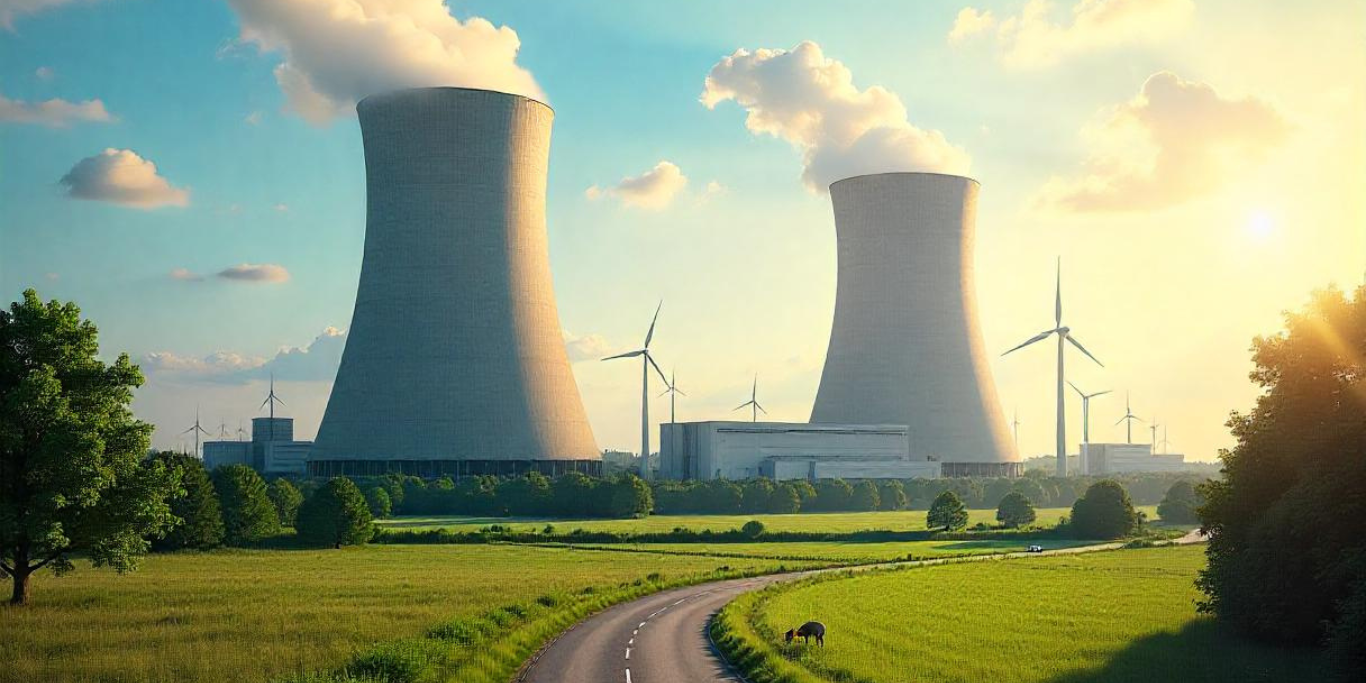Nuclear Energy Environmental Impact: A Sustainable Solution or a Risk?
As the world seeks cleaner energy alternatives, nuclear power remains a controversial yet significant player in the energy transition. While it offers a low-carbon power source, concerns persist regarding its environmental impact, safety, and long-term sustainability. In this article, we’ll explore the environmental effects of nuclear energy, how it works, and whether it is a viable solution for a greener future.
What Is Nuclear Energy?
Nuclear energy is generated through the process of nuclear fission, where atomic nuclei split to release a massive amount of energy. This energy is then used to produce electricity in nuclear power plants. Unlike fossil fuels, nuclear power does not emit carbon dioxide during operation, making it an attractive option for reducing greenhouse gas emissions.
How Does Nuclear Energy Work?
Nuclear power plants operate by harnessing heat from controlled nuclear reactions to produce steam, which drives turbines to generate electricity. The primary fuel used in most reactors is uranium-235, a naturally occurring radioactive element. The efficiency and reliability of nuclear energy have made it a key player in global electricity generation.
Environmental Impact of Nuclear Energy
1. Low Greenhouse Gas Emissions
One of the biggest advantages of nuclear energy is its ability to generate electricity with minimal carbon emissions. Unlike coal and natural gas, nuclear power plants do not release CO₂ during operation, making them an essential tool in fighting climate change.
2. Radioactive Waste Management
Despite its low emissions, nuclear energy produces radioactive waste, which must be carefully stored and managed to prevent environmental contamination. Spent fuel rods, contaminated water, and other radioactive materials pose long-term disposal challenges.
3. Water Usage and Thermal Pollution
Nuclear power plants require significant amounts of water for cooling, leading to potential thermal pollution. When heated water is released back into natural bodies of water, it can disrupt aquatic ecosystems and harm marine life.
4. Land and Resource Efficiency
Compared to renewable energy sources like solar and wind, nuclear power plants require less land to generate large amounts of electricity. Additionally, uranium is a highly energy-dense fuel, meaning less material is needed compared to fossil fuels.
Geothermal vs. Nuclear Energy: Comparing Environmental Impacts
While nuclear energy provides a consistent and low-carbon power source, geothermal energy is another alternative with its own environmental advantages. Geothermal energy harnesses heat from the Earth’s core, offering renewable and sustainable electricity generation.
How Do They Compare?
- Carbon Footprint: Both nuclear and geothermal energy produce minimal CO₂ emissions.
- Waste Production: Nuclear power generates radioactive waste, whereas geothermal energy has a lower environmental waste impact.
- Land Use: Nuclear energy is more space-efficient, while geothermal plants require specific locations with geothermal activity.
- Water Consumption: Nuclear power demands high water usage, whereas geothermal plants use significantly less.
Interested in learning more? Check out our detailed article on Geothermal Energy: The Key to Clean and Renewable Power to explore how it compares to nuclear energy. Don’t miss it!
Advantages and Disadvantages of Nuclear Energy
Advantages
- Low Carbon Emissions: Nuclear power significantly reduces greenhouse gases compared to fossil fuels.
- High Energy Output: A single nuclear reactor can generate large amounts of electricity consistently.
- Energy Security: Nuclear power reduces dependency on imported fossil fuels.
- Efficient Land Use: Nuclear plants produce more power per square meter than renewables.
Disadvantages
- Radioactive Waste: Managing nuclear waste is expensive and requires long-term storage solutions.
- High Initial Costs: Building nuclear plants is capital-intensive and takes years to complete.
- Nuclear Accidents: Events like Chernobyl and Fukushima highlight safety risks associated with nuclear power.
- Resource Limitations: Uranium is finite, making nuclear energy a non-renewable resource in the long term.
Is Nuclear Energy a Sustainable Solution?
While nuclear power presents an effective way to reduce carbon emissions, its long-term sustainability depends on advancements in waste management, safety, and alternative nuclear technologies like fusion energy. Many countries in Europe are investing in next-generation nuclear reactors and renewable energy integration to create a balanced energy mix.
Conclusion
Nuclear energy plays a vital role in the global transition to cleaner energy. However, its environmental impact, waste disposal challenges, and high costs must be carefully managed. As the world moves toward a more sustainable future, a combination of nuclear, geothermal, solar, and wind energy will be crucial in reducing our dependence on fossil fuels.
Stay Updated on Renewable Energy Trends
Want to learn more about the latest developments in energy solutions? Visit our blog for expert insights and updates on sustainable energy sources!










